By The Siberian Times reporter
28 July 2014
Reindeer herders find more craters in the far north in a deepening puzzle for scientists.
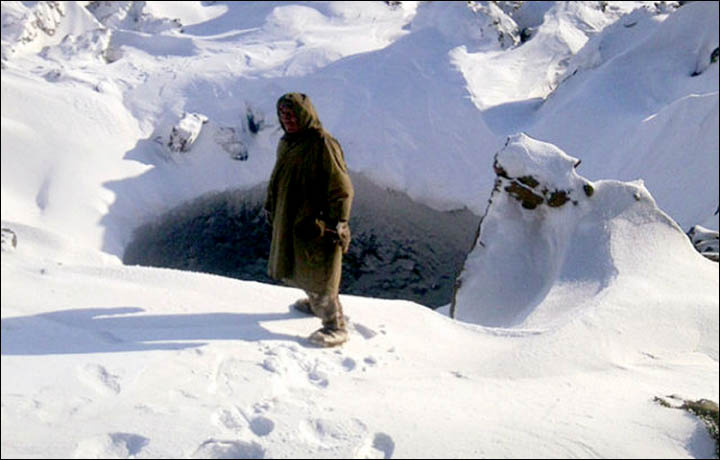
The funnel is a perfectly formed cone, say locals who are mystified at how it was formed. Its depth
is estimated at between 60 and 100 metres and its diameter - more than four metres. Picture: Local
residents
is estimated at between 60 and 100 metres and its diameter - more than four metres. Picture: Local
residents
Millions of people around the world glimpsed the first giant hole after it was revealed by The
Now news has emerged of two new similar formations in the permafrost, prompting more
intrigue
intrigue
about their creation.
Theories range from meteorites, stray missiles, a man-made prank, and aliens, to an explosive
cocktail of methane or shale gas suddenly exploding. The version about melting permafrost
due
due
to climate change, causing a release of methane gas, which then forces an eruption is the
current
current
favorite, though scientists are reluctant to offer a firm conclusion without more study.
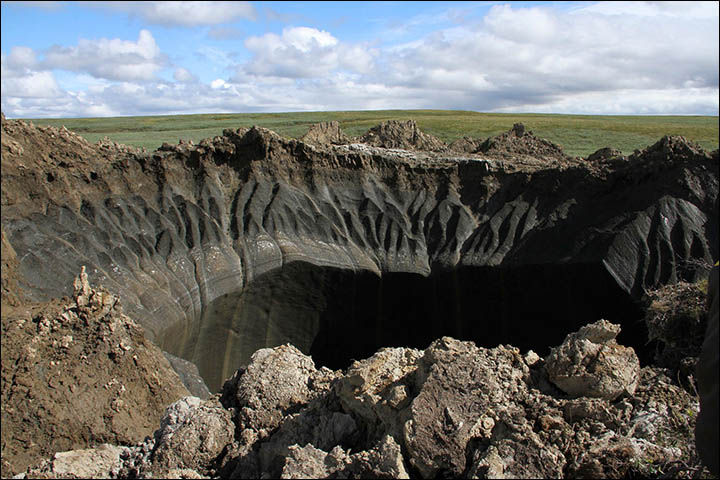
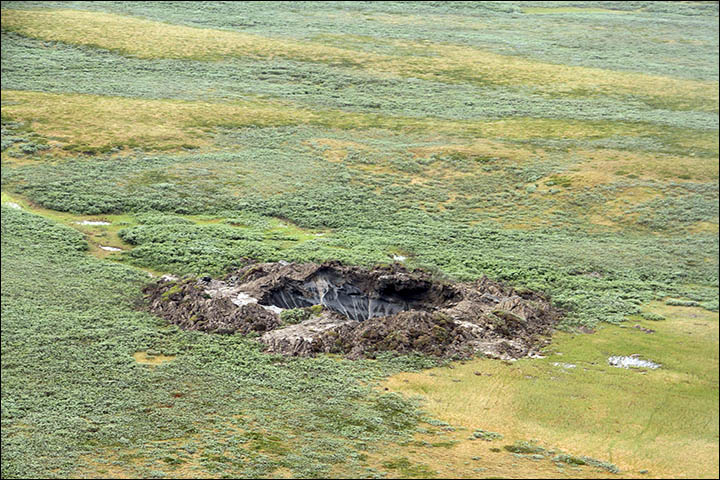
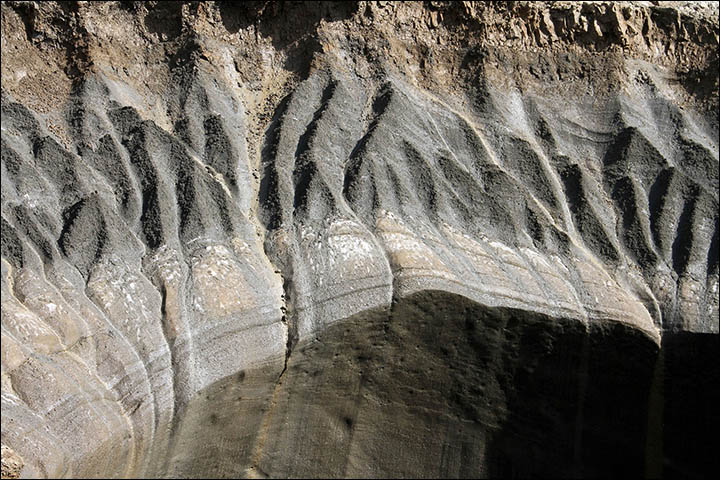
First pictures from the big crater near Bovanenkovo gas field. Theories range from meteorites,
stray missiles,
stray missiles,
a man-made prank, and aliens, to an explosive cocktail of methane or shale gas suddenly exploding.
Pictures:
Pictures:
Andrey Naumenko, 'Yamal-Region'
The second is in the Yamal Peninsula - known to locals as 'the end of the world' -
like the first. It is
like the first. It is
some hundreds kilometres from the first, which is close to a huge gas extraction plant at
Bovanenkovo.
Bovanenkovo.
This new crater in the Taz district, near the village of Antipayuta, has a diameter of about
15 metres.
15 metres.
A deputy of the regional parliament - or duma - Mikhail Lapsui has examined this latest
phenomenon.
phenomenon.
'I flew by helicopter to inspect this funnel on Saturday 19 July,' he said. 'Its diameter is about
15 meters.
15 meters.
'There is also ground outside, as if it was thrown as a result of an underground explosion.
'According to local residents, the hole formed on 27 September 2013. Observers give several
versions.
versions.
According to the first, initially at the place was smoking, and then there was a bright flash.
In the second
In the second
version, a celestial body fell there.'
heard about the second funnel on Yamal, in Taz district, and saw the pictures.
'Undoubtedly, we need to study all such formations. It is necessary to be able to predict their
occurrence.
occurrence.
Each new funnel provides additional information for scientists.'
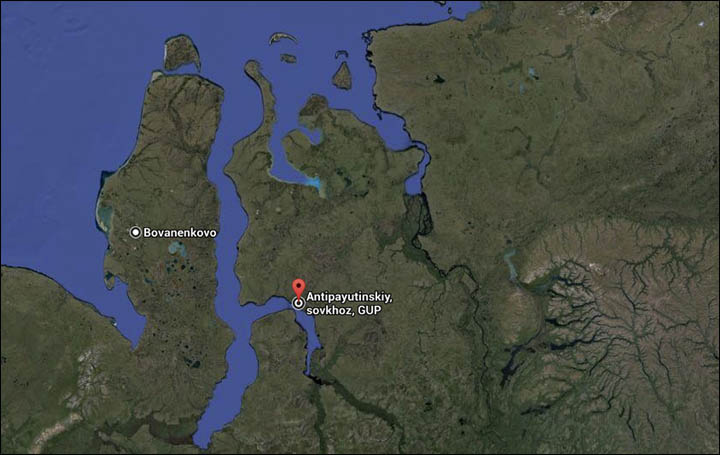
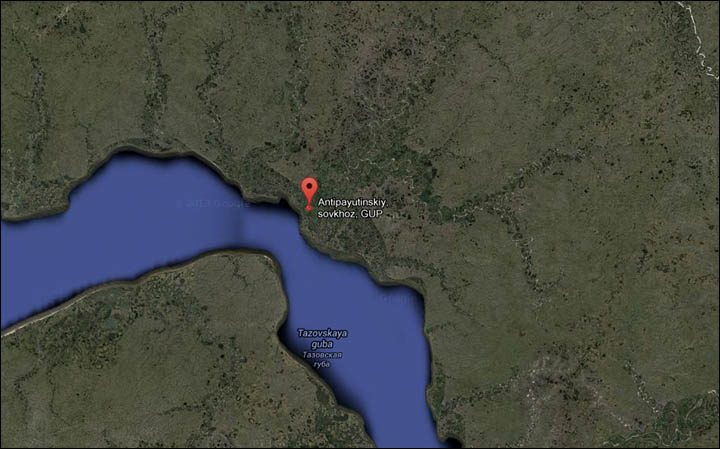
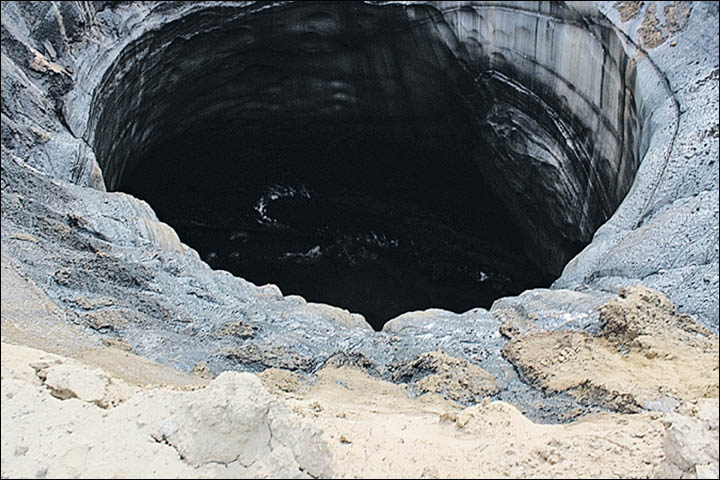
This new crater in the Taz district, near the village of Antipayuta, has a diameter of about 15 metres.
Pictures: Google maps, press service of the Governor YaNAO
Pictures: Google maps, press service of the Governor YaNAO
The third crater and hole is in the Taymyr Peninsula, to the east of Yamal,
in Kransoyark region.
It was accidentally discovered by local herders, inhabitants of the northern village
of Nosok.
in Kransoyark region.
It was accidentally discovered by local herders, inhabitants of the northern village
of Nosok.
The funnel is a perfectly formed cone, say locals who are mystified at how it was formed.
Its depth is
Its depth is
estimated at between 60 and 100 metres and its diameter - more than four metres.
The herders almost fell into the hole which lies on a pasturing route. They took pictures
of the
hole which
of the
hole which
were sent to scientists at the Norilsk Taimyr Explorers' Club.
Experts - geologists, ecologists, and historians - have not come to a consensus about the origin
of the
of the
funnel, say reports in the region.
'It is not like this is the work of men, but also doesn't look like natural formation,' said one account.
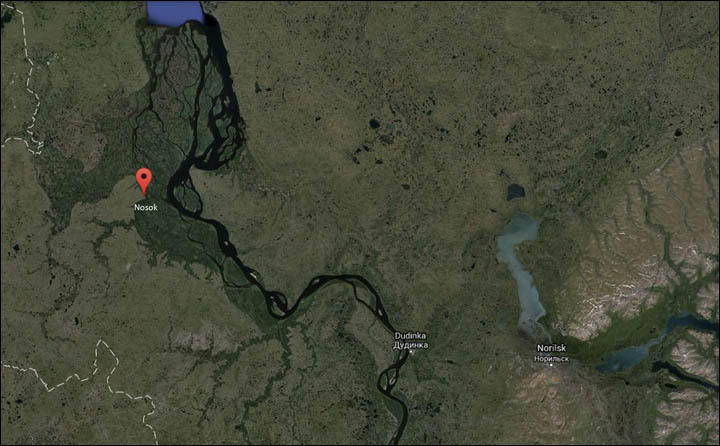
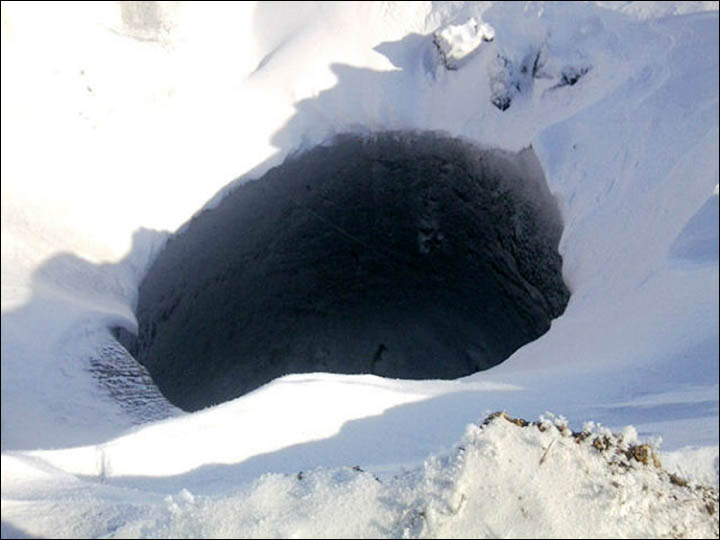
The herders almost fell into the hole which lies on a pasturing route. They took pictures of the hole
which were
which were
sent to scientists at the Norilsk Taimyr Explorers' Club. Pictures: Google maps, Local residents
Further study is planned of this hole.
The first hole is around 70 metres deep with an icy lake at its bottom.
Mystery Behind Giant Hole in Siberia Clearer
as 2nd Discovered
- The Moscow Times
- Jul. 22 2014 12:43
- Last edited 12:43

Marya Zulinova / Governor of Yamal-NenetsRegion's Press ServiceThe craters, believed to be formed by an underground explosion, are now filled with snow and ice.
Reindeer herders in Russia's Far North have discovered yet another mysterious giant hole
about 30
about 30
kilometers away from a similar one found days earlier.
Located in the permafrost of the subarctic Siberian region of Yamal, which means
"end of the earth"
"end of the earth"
in the local Nenets language, both craters appear to have been formed in recent years
nd have icy
nd have icy
lakes at their bases.
Scientists who examined the first hole theorized that it could have been created when
a mixture of
a mixture of
water, salt and gas exploded underground, the Siberian Times news site reported.
The area, which has one of Russia's richest deposits of natural gas, was covered by
sea about
sea about
10,000 years ago, and vast salt deposits were left behind.
"Global warming, causing an alarming melt in the ice under the soil, released gas causing
an effect
an effect
like the popping of a Champagne cork," the news report said, citing an expert at the Subarctic
Scientific Research Center.
The first hole is estimated to be about 50 meters wide and 70 meters deep, with water
from melting
from melting
permafrost cascading down its sides into the icy deposit below.
The second hole is "exactly" like the first one, but "much smaller," local lawmaker Mikhail Lapsui
told the Interfax-Ural news agency. "Inside the crater itself, snow can be seen."
told the Interfax-Ural news agency. "Inside the crater itself, snow can be seen."
See also:
The mystery deepens.
Just days after a passing helicopter spotted a giant hole in northern Siberia,
(Story continues below.)
the first hole was spotted, The Moscow Times reported. It resembles the first hole and has a
diameter of nearly 50 feet.
region and measures about 13 feet across, according to The Siberian Times.
Researchers who examined the first hole will now be dispatched to the other two formations to
collect more data.
Scientists with the Russian Academy of Sciences' Institute of the Earth Cryosphere,
which is leading t
which is leading t
the investigation, suspect that the first hole formed when melting permafrost triggered an
xplosion
xplosion
of methane gas. That theory was bolstered when an icy lake was found at the bottom of the
230-foot-deep hole.
Yet researchers have been reluctant to conclude definitively that a
reaction spurred by climate change is what caused the hole.
"Undoubtedly, we need to study all such formations. It is necessary to be able to predict their
occurrence," Marina Leibman, the institute's chief scientist, told Russian-language news site
URA.RU, according to The Siberian Times. "Each new funnel provides additional information
for scientists."
In the meantime, other possible explanations have been offered -- from a meteor impact to

No comments:
Post a Comment